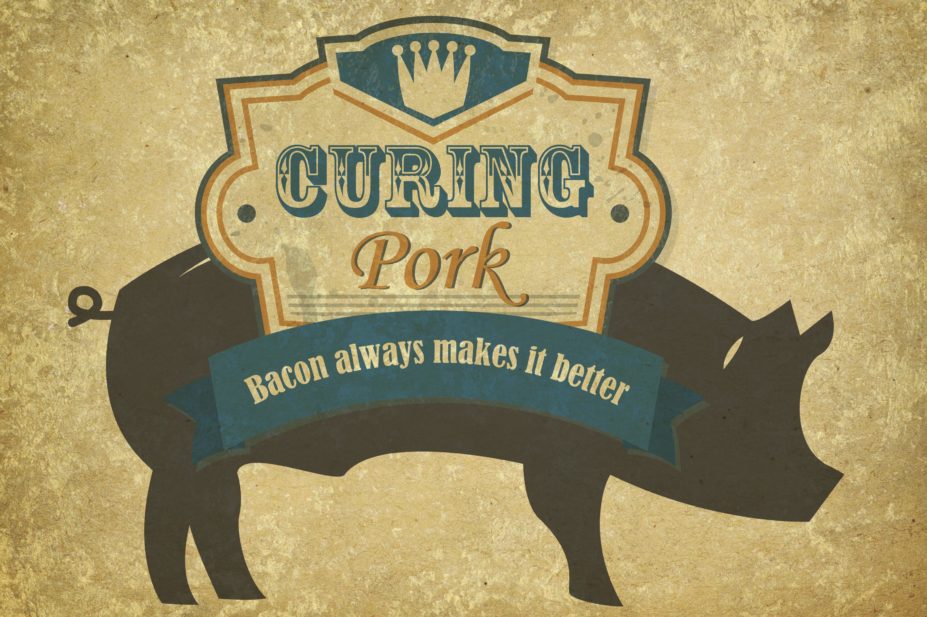
Shutterstock.com / MAG
Meat from pigs, quite apart from making delicious sandwiches, has been used for a number of unrelated medical purposes. Pork and bacon have been used to control bleeding, as well as in the treatment of furuncular myiasis and scabies.
Doctors at Michigan’s children’s hospital used a nasal pork tampon in each nostril to stop uncontrolled bleeding in a four-year-old girl suffering from a rare bleeding disorder. The girl suffered from Glanzmann thrombasthenia, which can cause fatal internal and nasal bleeding, and doctors had tried administering clotting proteins, specialised dressings, blood transfusions and coagulating serum over a period of six days in unsuccessful attempts to stem a nosebleed. Strips of cured salt pork in the nostrils finally stopped the bleeding. It is thought that the high salt content of the pork causes swelling, which blocks the bleeding blood vessel.
This may sound like an unlikely therapy for epistaxis even in these enlightened times, but it was derided back in 1998, in a rather condescending article published in the Postgraduate Medical Journal. ‘First aid treatment of epistaxis — confirmation of widespread ignorance’ found that only 11% of people knew how to treat a nosebleed.
The author of this study also reckoned healthcare professionals weren’t much better at tackling epistaxis. So, just in case, here’s his recommendation: “The most satisfactory method is to pinch the lower part of the nose thus applying direct pressure to Little’s area, the most likely site of the bleeding point. In addition, the head should be tilted forward, facilitating clot formation and avoiding a steady trickle into the post-nasal space, as swallowed blood is extremely nauseating.”
But returning to the pork theme, a study published in The Lancet explained how to treat furuncular myiasis using bacon fat. This is a parasitic infestation of the skin and soft tissue with the larva of Dermatobia hominis, the human botfly. The larvae cause boils and can lead to dramatic tissue destruction. Bacon fat applied to the skin lures the larvae to the surface after about three hours, where they can be plucked off with tweezers without causing complications.
Bacon fat has also been used as a base carrier for the active ingredients of sulphur and salicylic acid to treat scabies. A study compared it with cold cream as a base, and while the bacon fat preparation was only 88% effective compared with the 100% effective cold cream treatment, the study’s authors noted that it was significantly cheaper and easier to obtain than the cold cream base and 238 times less expensive than the cheapest scabicidal medication available in the United States.
You may also be interested in

Calling the shots: the pharmacists combatting vaccine misinformation

Embedding quality improvement in pharmacy practice: a departmental strategy at University Hospitals of Derby and Burton
